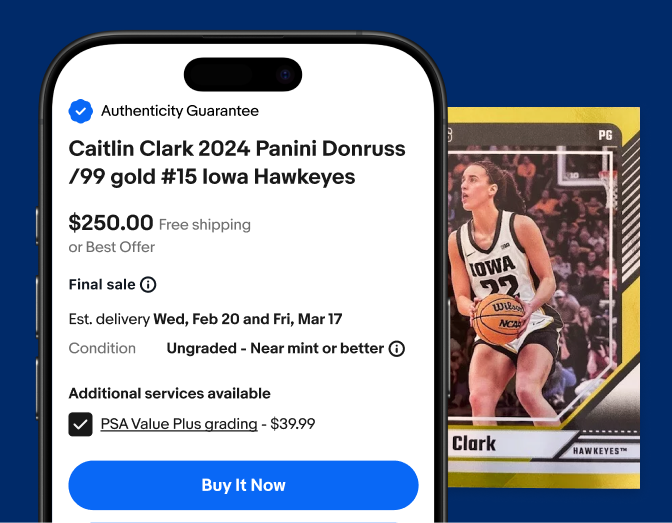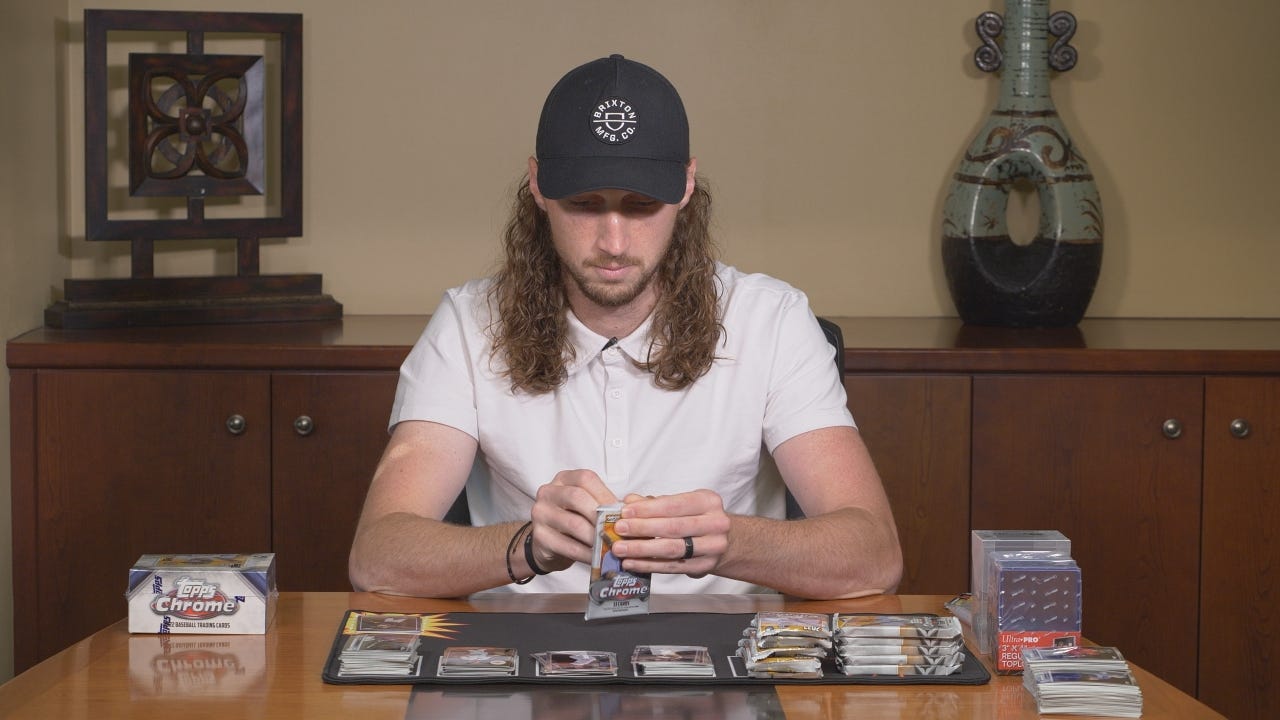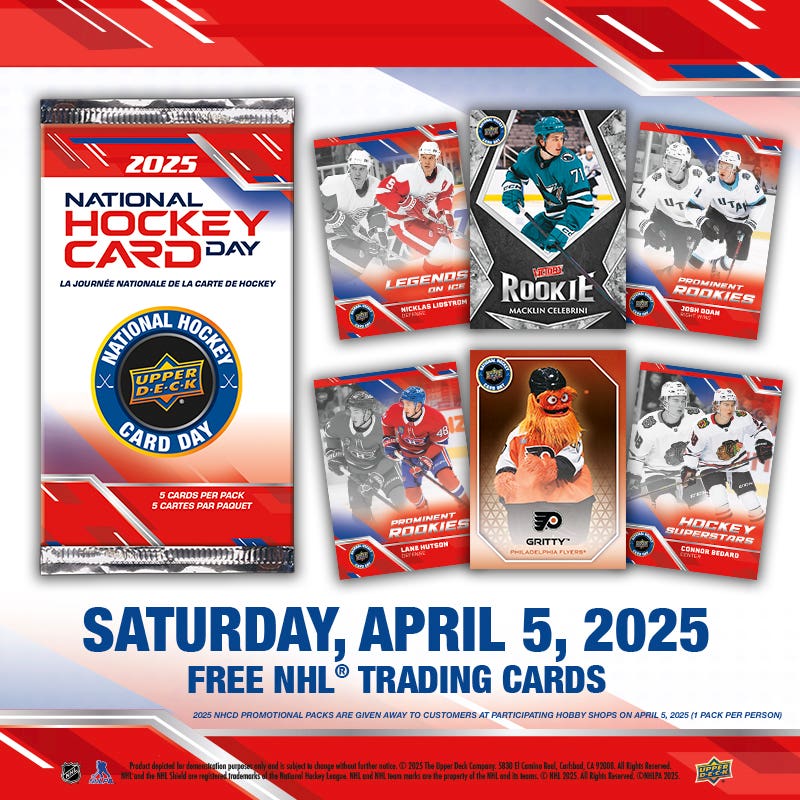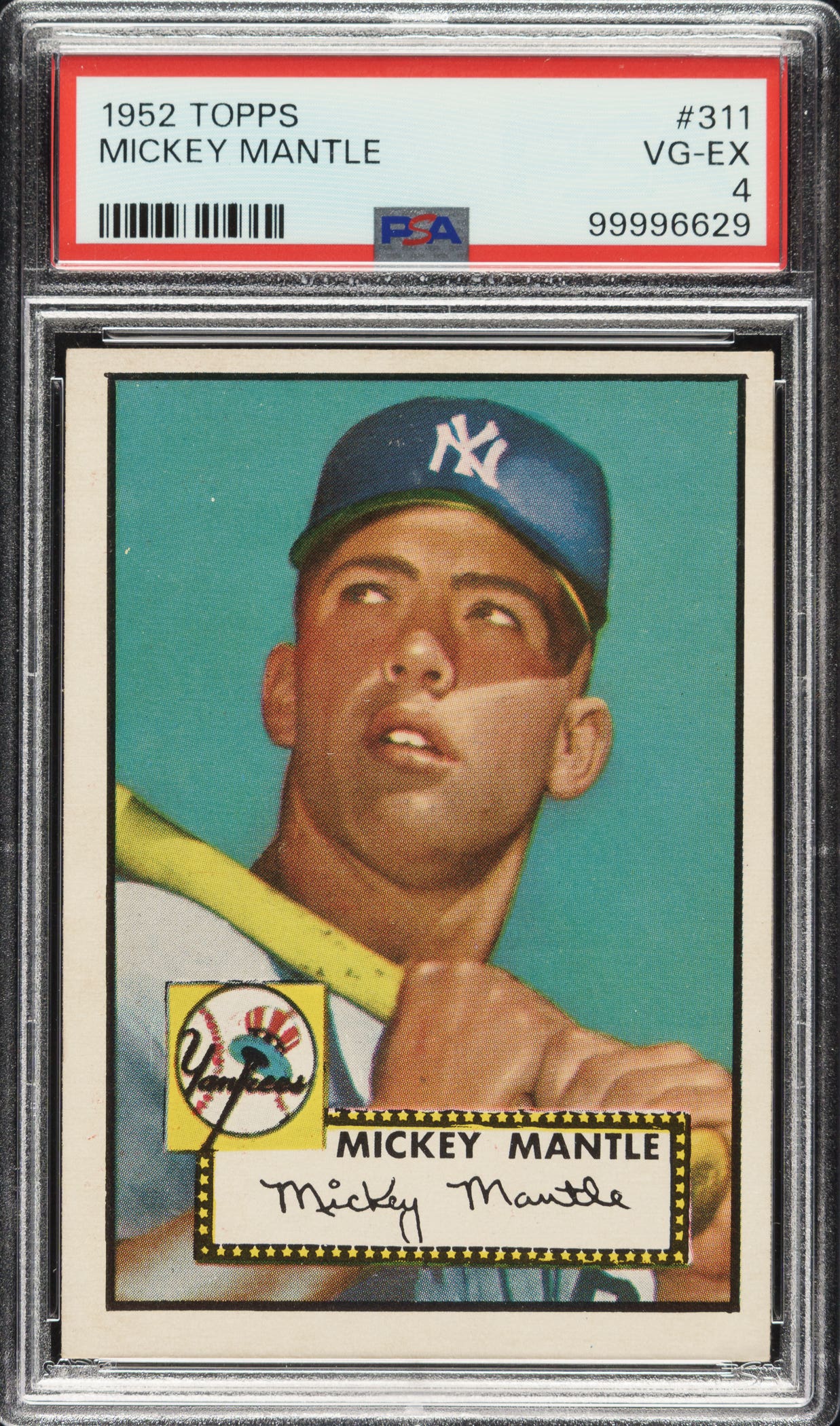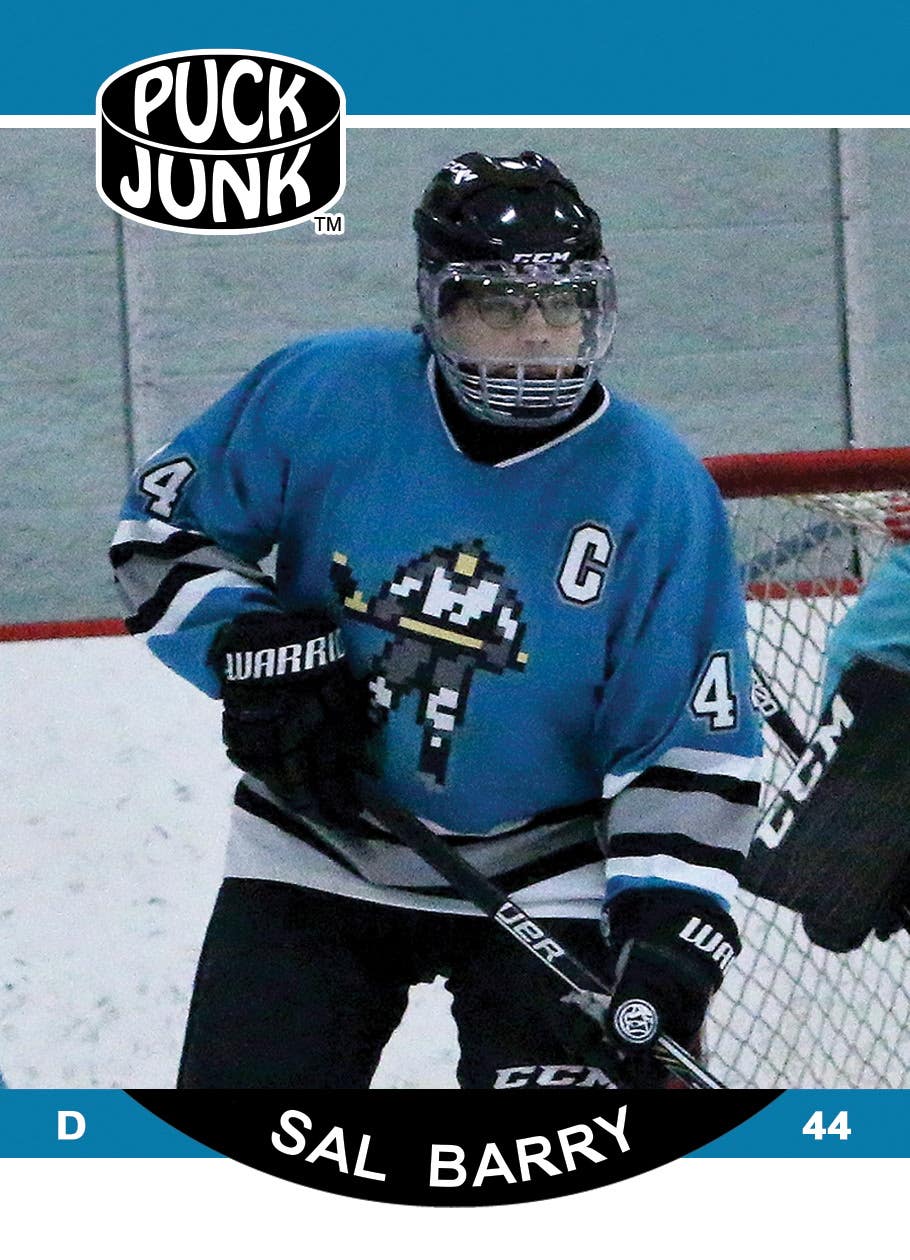
Features
Still in the News: 1954 Topps Scoop
By Doug Koztoski
Clickety-clack, clickety-clack. Thinking back to the early 1950s and a couple generations before that, reporters wrote many newspaper stories on manual typewriters that made the distinctive “clickety-clack” sound when pressing the keys. Some of those stories, of course, were front page/headline worthy that still get some “ink,” even if it is electronic.
The 1954 Topps Scoop set features several famous historical events, mostly from Europe and the U.S., and mainly from the 1700s to 1953, presented in a newspaper “top story” format. The “Scoop” name comes from journalism lingo where a reporter receives a “scoop,” as in beating their competition to a story. Some cards in the issue go way back, however, like (#88) “Troy Falls To Greeks” from 1184 B.C. That Trojan Horse story still makes me chuckle.
While many of the events covered in the set revolve around war, politics, disasters and crime, a handful of the Scoop cards highlight a sports feat, ranging from footnote to formidable.
Divided into two 78-card series, even if you stretch the definition of what is really a sport, most would agree that just a handful of the 156 cards represent an athletic endeavor. More on the Scoop sport cards in a moment.
Bill Bengen owns the No. 1 PSA Set Registry collection of Scoop cards, and this issue remains “top news” for him in many ways. “This was the first series I remember actively collecting, where (in 1954) I became aware that cards were meant to be collected,” Bengen said.
“It’s a fascinating set. The artwork is good. The narrative on the back is fun and then there is a neat format, a banner headline and you also have that scratch-off format. It just contains all the important ingredients,” he said. “When you see it in pristine condition with those bright white borders, the spectacular colors, this set is just so beautiful.”
The cards chiefly came in penny packs (one card) or the nickel version (five cards). The coating/scratch-off approach on some card fronts looked like you were seeing a small portion of the pasteboard’s image through the horizontal slats of mostly closed Venetian blinds.
Bengen recalls the average penny pack card with a coating on top, while the 5-cent packs contained only one in that manner. Two styles of coating exist: one that is solid black and another with a black background for the words “Scoop, Scratch it off, Peel it off, See it now!”
See It Now, by the way, was a highly acclaimed CBS newsmagazine and documentary TV show for most of the 1950s, hosted by news icon Edward R. Murrow.
A few See It Now producers later helped create 60 Minutes, the award-winning newsmagazine program that has been on CBS since 1968.
The Sports Page
Although pitcher Bob Feller’s 18 strikeouts in one 1938 game delivers the set’s initial sports card (#27), Bengen, like many collectors, picked the spotlighting of Babe Ruth’s record-setting 60th home run in 1927 (#41) as his favorite in the issue. “It’s a well done card with good color,” he said. “I also like the Ben Hogan card (#129) because I love golf.”
“The sports cards generate the most interest in the set and Ruth is the key,” said Michael Goldberg of Robert Edward Auctions. “This early Topps (mostly) non-sport set is very popular. And it is toward the end of the smaller (size-wise) non-sports issues” with the cards measuring 2-1/16-by-2-15/16 inches.
The Boston Braves 1953 move to Milwaukee (#130), the first relocation of an MLB franchise in decades, and a 1920 26-inning game between the Braves and Brooklyn Robins/Dodgers (#154), where pitchers Joe Oeschger and Leon Cadore dueled it out in a 26-inning 1-1 tie – yes both pitched the entire game – round out the collection’s baseball cards.
Boxers bring a solid punch to the Scoop sports arena as well with Jack Dempsey (#39), Joe Louis (#40), Rocky Marciano (#65) and John L. Sullivan (#71).
Still active in the ring in 1954, Marciano’s card featured a knockout of Jersey Joe Walcott in 1952, where Rocky first won the world heavyweight title. The Marciano attracts strong demand.
The lone football Scoop reached back to 1923 and showed Notre Dame’s famous Four Horsemen (#110) backfield. “People like that card,” said Goldberg. Even so, one might think it would be much more popular.
At least from a PSA perspective, for instance, that ’54 Scoop appears about 10 to 15 times less often than the Four Horsemen card from the 1955 Topps All-American set, both in overall cards in holders and in higher grades. Granted, the ’55 card is physically much larger, more colorful and from a wildly popular all-football set, but the ’54 Horsemen might just be one to scoop up a couple of.
Of the three remaining Scoop sports cards not yet covered, the selection is all over the map, in one sense or another. Card (#70) looks at a 1953 event, the first official summiting of Mt. Everest; a couple slots later there is a nod to Gertrude Ederle, the first woman to swim the entire English Channel (1926); and who can forget Jesse Owens (#128)?
Owens won four gold medals in track and field at the 1936 Summer Olympic Games in Berlin, Germany, one of the most famous and controversial Games ever. The Topps Scoop depicts Owens in 1936, but not for Olympic glory. Instead, they show the runner racing a horse – in Cuba.
“The first half of the set is a little more common than the second half,” said Bengen. “But almost all of these cards are impossible to find in very high grades. PSA 9s and 10s are almost non-existent in this series.” A main culprit to lower grades with the Scoop issue? Poor centering.
Tomorrow’s news today!
Goldberg said the ’54 Topps Scoop issue makes a consistent enough appearance in the Robert Edward auctions and he sees that trend continuing. “It’s a nice set, a very popular set,” he said. “People have always had an interest in history, and this set played to a lot of young and old collectors.”
Additionally, Goldberg said obtaining a full collection of the cards remains affordable. “You can put together a lower-to-mid-grade (raw) set for around $500. And there are not a lot of sets you can assemble from that era for that price.”
Like peering through the then World’s Largest Telescope (built in 1948), highlighted via the Scoop set-ender, Bengen sees good things for the issue’s popularity over the long range, as well. And he predicts non-sports cards in general increasing in interest and value.
“I think it is a superior set,” he said. “If I had to choose one set to keep, and give away the other ones from the ’50s, the time of the cards I love, this is the set I would want to keep.”
Clickety-clack, clickety-clack…’54 Scoop Set Gaining Momentum! – a hobby headline for sure.
What’s the Scoop?
Here are some recent auction prices realized, rounded to the nearest dollar, for various 1954 Topps Scoop cards. The pasteboards have no coating on them unless noted.
• San Francisco Earthquake (1906, w/coating, #1) PSA 7: $1,003
• Ben Hogan (1953, #129) PSA 7: $353
• Babe Ruth (1927, #41) SGC 60/5: $343
• Ruth (#41) SGC 84/7: $327
• Jack Dempsey (1919, #39) PSA 7: $182
• Bob Feller (1938, #27) PSA 6: $166
• Hogan (#129) NM, raw: $153
• Notre Dame’s Four Horsemen (1923, #110) PSA 7 M/C: $103
• Jesse Owens (1936, #128) EX, raw: $54
• Joe Louis (1937, #40) VG+, raw): $21
• Commons (VG): $3-$4 each
• Complete set (VG to VG+, raw): $438.
Doug Koztoski welcomes comments and questions related to this article at dkoz3000@gmail.com.

